Sun & climate: moving in opposite directions
What the science says...
| Select a level... |
 Basic
Basic
|
 Intermediate
Intermediate
|
 Advanced
Advanced
| ||||
|
In the last 35 years of global warming, the sun has shown a slight cooling trend. Sun and climate have been going in opposite directions. In the past century, the Sun can explain some of the increase in global temperatures, but a relatively small amount. |
|||||||
Climate Myth...
It's the sun
"Over the past few hundred years, there has been a steady increase in the numbers of sunspots, at the time when the Earth has been getting warmer. The data suggests solar activity is influencing the global climate causing the world to get warmer." (BBC)
It's often considered "common sense" that global warming is caused by the Sun. After all, the Sun is the source of almost all of the energy on Earth. The Sun has both direct and indirect influences over the Earth's temperature, and we can evaluate whether these effects could be responsible for a significant amount of the recent global warming. As shown in the Intermediate level rebuttal of this argument, dozens of studies have concluded that the Sun simply cannot account for the recent global warming, but here we'll go through the calculations for ourselves.
Direct solar effect
The Sun's largest influence on the Earth's surface temperature is through incoming solar radiation, also known as total solar irradiance (TSI). Changes in TSI can be converted into a radiative forcing, which tells us the energy imbalance it causes on Earth. This energy imbalance is what causes a global temperature change.
The solar radiative forcing is TSI in Watts per square meter (W-m-2) divided by 4 to account for spherical geometry, and multiplied by 0.7 to account for planetary albedo (Meehl 2002). The albedo factor is due to the fact that the planet reflects approximately 30% of the incoming solar radiation.
This is a very straightforward and easy to understand formula - the larger the change in solar irradiance, the larger the energy imbalance it causes, and thus the larger the radiative forcing. Studies have reconstructed TSI over the past 300 years. Wang, Lean, and Sheeley (2005) compared a flux transport model with geomagnetic activity and cosmogenic isotope records and to derive a reconstruction of TSI since 1713.
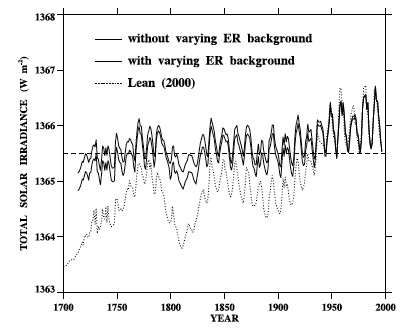
Figure 1: Total Solar Irradiance from 1713 to 1996 (Wang 2005)
Satellites have directly measured TSI since 1978.
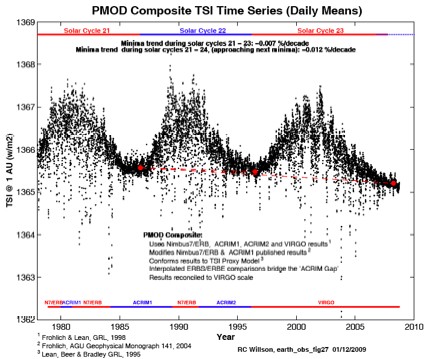
Figure 2: Total Solar Irradiance as measured by satellite from 1978 to 2010
As you can see, over the past 32 years, TSI has remained unchanged on average. In the early 20th century, from about 1900 to 1950 there was an increase in TSI from about 1365.5 to 1366 W-m-2. The change in global temperature in response to a radiative forcing is:
Where 'dT' is the change in the Earth's average surface temperature, 'λ' is the climate sensitivity, usually with units in Kelvin or degrees Celsius per Watts per square meter (°C/[W-m-2]), and 'dF' is the radiative forcing.
So now to calculate the change in temperature, we just need to know the climate sensitivity. Studies have given a possible range of values of 2 to 4.5°C warming for a doubling of CO2 (IPCC 2007), which corresponds to a range of 0.54 to 1.2°C/(W-m-2) for λ. We can then calculate the change in global temperature caused by the increase in TSI since 1900 using the formulas above. Although Wang, Lean, and Sheeley's reconstruction puts the change in TSI since 1900 at about 0.5 W-m-2, previous studies have shown a larger change, so we'll estimate the change in TSI at 0.5 to 2 W-m-2.
with a most likely value of 0.15°C
We can confirm this by comparing the calculation to empirical observations. From 1900 to 1950 the Earth's surface temperature warmed by about 0.4°C. Over that period, humans increased the amount of carbon dioxide in the atmosphere by about 20 parts per million by volume. This corresponds to an anthropogenic warming of:
with a most likely value of 0.22°C.
Therefore, the solar forcing combined with the anthropogenic CO2 forcing and other minor forcings (such as decreased volcanic activity) can account for the 0.4°C warming in the early 20th century, with the solar forcing accounting for about 40% of the total warming. Over the past century, this increase in TSI is responsible for about 15-20% of global warming (Meehl 2004). But since TSI hasn't increased in at least the past 32 years (and more like 60 years, based on reconstructions), the Sun is not directly responsible for the warming over that period.
Foster and Rahmstorf (2011) used multiple linear regression to quantify and remove the effects of the El Niño Southern Oscillation (ENSO) and solar and volcanic activity from the surface and lower troposphere temperature data. They found that since 1979, solar activity has had a very slight cooling effect of between -0.014 and -0.023°C per decade, depending on the data set (Table 1, Figure 3).
Table 1: Trends in °C/decade of the signal components due to MEI, AOD and TSI in the regression of global temperature, for each of the five temperature records from 1979 to 2010.
Figure 3: Influence of exogenous factors on global temperature for GISS (blue) and RSS data (red). (a) MEI; (b) AOD; (c) TSI.
Like Foster and Rahmstorf, Lean and Rind (2008)performed a multiple linear regression on the temperature data, and found that while solar activity can account for about 11% of the global warming from 1889 to 2006, it can only account for 1.6% of the warming from 1955 to 2005, and had a slight cooling effect (-0.004°C per decade) from 1979 to 2005. Similarly, Schurer et al. (2013) uses multiple linear regression and finds that the sun is unlikely to have caused more than 0.15°C of the observed approximately 1°C warming over the past 300 years.
Note that this multiple linear regression technique it makes no assumptions about various solar effects. Any solar effect (either direct or indirect) which is correlated to solar activity (i.e. solar irradiance, solar magnetic field [and thus galactic cosmic rays], ultraviolet [UV] radiation, etc.) is accounted for in the linear regression. Both Lean and Rind and Foster and Rahmstorf found that solar activity has played a very small role in the recent observed global warming.
Indirect Solar Effects
Ultraviolet Radiation
It has also been proposed that ultraviolet (UV) radiation, which varies more than other solar irradiance wavelengths, could amplify the solar influence on the global climate through interactions with the stratosphere and atmospheric ozone. Shindell et al. (1999) examined this possibility, but found that while this UV variability has a significant influence over regional temperatures, it has little effect on global surface temperatures.
"Solar cycle variability may therefore play a significant role in regional surface temperatures, even though its influence on the global mean surface temperature is small (0.07 K for December–February)."
Moreover, Shindell et al. found that anthropogenic ozone depletion (via chlorofluorocarbon emissions) may have reduced the impact of UV variability on the climate, and may have even offset it entirely.
"Another consideration is that upper stratospheric ozone has decreased significantly since the 1970s as a result of destruction by halogens released from chlorofluorocarbons. This ozone decrease, which has been much larger than the modeled solar-induced ozone increases, may have limited the ability of solar irradiance changes to affect climate over recent decades, or may have even offset those effects."
Galactic cosmic rays
Henrik Svensmark has proposed that galactic cosmic rays (GCRs) could exert significant influence over global temperatures (Svensmark 1998). The theory goes that the solar magnetic field deflects GCRs, which are capable of seeding cloud formation on Earth. So if solar magnetic field were to increase, fewer GCRs would reach Earth, seeding fewer low-level clouds, which are strongly reflective. So an increased solar magnetic field can indirectly decrease the Earth's albedo (reflectivity), thus causing the planet to warm. Thus in order for this theory to be plausible,
- Solar magnetic field must have a long-term positive trend.
- Galactic cosmic ray flux on Earth must have a long-term negative trend.
- Cosmic rays must successfully seed low-level clouds.
- Low-level cloud cover must have a long-term negative trend.
Fortunately we have empirical observations with which to test these requirements.
Solar magnetic field
Solar magnetic field strength correlates strongly with other solar activity, such as TSI and sunspot number. As is the case with these other solar attributes, solar magnetic field has not changed appreciably over the past three decades (Lockwood 2001).
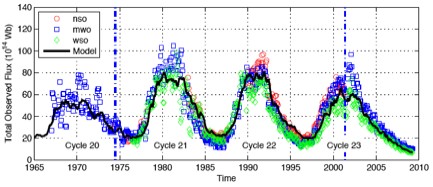
Figure 3: Solar Magnetic Flux from 1967 to 2009 (Vieira and Solanki 2010)
Galactic Cosmic Ray Flux
Cosmic ray flux on Earth has been monitored since the mid-20th century, and has shown no significant trend over that period.
Figure 4: Cosmic Ray Intensity (blue) and Sunspot Number (green) from 1951 to 2006 (University of New Hampshire)
GCR Cloud Seeding
Numerous studies have investigated the effectiveness of GCRs in cloud formation. Kazil et al. (2006) found:
"the variation of ionization by galactic cosmic rays over the decadal solar cycle does not entail a response...that would explain observed variations in global cloud cover"
Sloan and Wolfendale (2008) found:
"we estimate that less than 23%, at the 95% confidence level, of the 11-year cycle changes in the globally averaged cloud cover observed in solar cycle 22 is due to the change in the rate of ionization from the solar modulation of cosmic rays."
Kristjansson et al. (2008) found:
"no statistically significant correlations were found between any of the four cloud parameters and GCR"
Calogovic et al. (2010) found:
"no response of global cloud cover to Forbush decreases at any altitude and latitude."
Kulmala et al. (2010) also found
"galactic cosmic rays appear to play a minor role for atmospheric aerosol formation events, and so for the connected aerosol-climate effects as well."
Low-Level Cloud Cover
Unfortunately observational low-level cloud cover data is somewhat lacking and even yields contradictory results. Norris et al. (2007) found
"Global mean time series of surface- and satellite-observed low-level and total cloud cover exhibit very large discrepancies, however, implying that artifacts exist in one or both data sets....The surface-observed low-level cloud cover time series averaged over the global ocean appears suspicious because it reports a very large 5%-sky-cover increase between 1952 and 1997. Unless low-level cloud albedo substantially decreased during this time period, the reduced solar absorption caused by the reported enhancement of cloud cover would have resulted in cooling of the climate system that is inconsistent with the observed temperature record."
So the jury is still out regarding whether or not there's a long-term trend in low-level cloud cover.
Inability to explain other observations
In addition to these multiple lines of empirical evidence which contradict the GCR warming theory, the galactic cosmic ray theory cannot easily explain the cooling of the upper atmosphere, greater warming at night, or greater warming at higher latitudes. These are fingerprints of the increased greenhouse effect, the major mechanism of anthropogenic global warming.
Dansgaard-Oeschger Events
Some individuals, most notably Fred Singer, have argued that Dansgaard-Oeschger (D-O, a.k.a. Bond) events could be causing the current global warming. D-O events are rapid climate fluctuations that occur quasi-periodically with a 1,470-year recurrance time and which, according to Singer, are "likely caused by the sun." However, there is significant debate as to the cause of these D-O events, with changes in solar output being just one possibility (NOAA Paleoclimatology).
Regardless, the most obvious flaw in this argument is that the planet wasn't warming 1,470 years ago. The previous warm event was the Medieval Warm Period approximately 1,000 years ago.
Figure 5: Global temperature reconstructions over the past 2,000 years (Wikipedia)
Bond et al. (1999) added further evidence that the timing of D-O events disqualifies them from being responsible for the current warming, by showing that the most recent D-O event may have contributed to the Little Ice Age (LIA):
"evidence from cores near Newfoundland confirms previous suggestions that the Little lce Age was the most recent cold phase of the 1-2kyr cycle"
And a study by Rahmstorf (2003) also concludes that the LIA may be the most recent cold phase of the D-O cycle, and his research suggests that the 1,470-year periodicity is so regular that it's more likely due to an orbital cycle than a solar cycle.
"While the earlier estimate of ±20% [Schulz, 2002] is consistent with a solar cycle (the 11-year sunspot cycle varies in period by ±14%), a much higher precision would point more to an orbital cycle. The closest cycle known so far is a lunar cycle of 1,800 years [De Rop, 1971], which cannot be reconciled with the 1,470-year pacing found in the Greenland data. The origin of this regular pacing thus remains a mystery."
However, according to Braun et al. (2005), D-O events could be caused by a combination of solar cycles and freshwater input into the North Atlantic Ocean. But their study also concludes that D-O events are not expected to occur during the Holocene (the current geologic epoch).
"the 1,470-year climate response in the simulation is restricted to glacial climate and cannot be excited for substantially different (such as Holocene) boundary conditions...Thus, our mechanism for the glacial ,1,470-year climate cycle is also consistent with the lack of a clear and pronounced 1,470-year cycle in Holocene climate archives."
The bottom line is that regardless of whether or not the D-O cycles are triggered by the Sun, the timing is clearly not right for this cycle to be responsible for the current warming. Particularly since solar output has not increased in approximately 60 years, and has only increased a fraction of a percent in the past 300 years, as discussed above.
Ironically, prior to publishing a book in 2007 which blamed the current warming on D-O cycles, Singer argued that the planet wasn't warming as recently as 2003. So the planet isn't warming, but it's warming due to the D-O cycles? It's quite clear that in reality, neither of these contradictory arguments is even remotely correct.
Inability to explain empirical observations
Aside from the fact that solar effects cannot physically explain the recent global warming, as with GCRs, there are several empirical observations which solar warming could not account for. For example, if global warming were due to increased solar output, we would expect to see all layers of the atmosphere warm, and more warming during the day when the surface is bombarded with solar radiation than at night. Instead we observe a cooling of the upper atmosphere and greater warming at night, which are fingerprints of the increased greenhouse effect.
Conservation of Energy
Huber and Knutti (2011) have published a paper in Nature Geoscience, Anthropogenic and natural warming inferred from changes in Earth’s energy balance. They take an approach in this study which utilizes the principle of conservation of energy for the global energy budget, and summarize their methodology:
"We use a massive ensemble of the Bern2.5D climate model of intermediate complexity, driven by bottom-up estimates of historic radiative forcing F, and constrained by a set of observations of the surface warming T since 1850 and heat uptake Q since the 1950s....Between 1850 and 2010, the climate system accumulated a total net forcing energy of 140 x 1022 J with a 5-95% uncertainty range of 95-197 x 1022 J, corresponding to an average net radiative forcing of roughly 0.54 (0.36-0.76)Wm-2."
Essentially, Huber and Knutti take the estimated global heat content increase since 1850, calculate how much of the increase is due to various estimated radiative forcings, and partition the increase between increasing ocean heat content and outgoing longwave radiation. The authors note that more than 85% of the global heat uptake (Q) has gone into the oceans, including increasing the heat content of the deeper oceans, although their model only accounts for the upper 700 meters.
Figure 6 is a similar graphic to that presented in Meehl et al. (2004), comparing the average global surface warming simulated by the model using natural forcings only (blue), anthropogenic forcings only (red), and the combination of the two (gray).
Figure 6: Time series of anthropogenic and natural forcings contributions to total simulated and observed global temperature change. The coloured shadings denote the 5-95% uncertainty range.
In Figure 7, Huber and Knutti break down the anthropogenic and natural forcings into their individual components to quantify the amount of warming caused by each since the 1850s (Figure 7b), 1950s (7c), and projected from 2000 to 2050 using the IPCC SRES A2 emissions scenario as business-as-usual (7d).
Figure 7: Contributions of individual forcing agents to the total decadal temperature change for three time periods. Error bars denote the 5–95% uncertainty range. The grey shading shows the estimated 5–95% range for internal variability based on the CMIP3 climate models. Observations are shown as dashed lines.
Solar and volcanic activity are the main natural forcings included in the Huber and Knutti study. Both are slightly positive since 1850, and account for approximately 0.2°C of the observed 0.8°C surface warming over that period. Since 1950, the volcanic forcing has been negative due to a few significant eruptions, and has offset the modestly positive solar forcing, such that the net natural external forcing contribution to global warming over the past 50 years is approximately zero (more specifically, the authors estimate the natural forcing contribution since 1950 at -10 to +13%, with a most likely value of 1%).
The authors also note that they chose a reconstruction with high variability in solar irradiance, so if anything they may have overestimated the natural contribution to the observed warming.
"Even for a reconstruction with high variability in total irradiance, solar forcing contributed only about 0.07°C (0.03-0.13°C) to the warming since 1950."
Other Attribution Studies
A number of studies have used a variety of statistical and physical approaches to determine the contribution of greenhouse gases and other effects to the observed global warming. Those studies find a relatively small solar contribution to global warming, particularly in recent decades (Figure 8).
Figure 8: Solar contribution to global warming according to Meehl et al. 2004 (M04, blue), Stone et al. 2007 (S07, red), Lean and Rind 2008 (LR08, green), and Huber and Knutti 2011 (HK11, purple).
It's not the Sun
As illustrated above, neither direct nor indirect solar influences can explain a significant amount of the global warming over the past century, and certainly not over the past 30 years. As Ray Pierrehumbert said about solar warming,
“That’s a coffin with so many nails in it already that the hard part is finding a place to hammer in a new one.”
Advanced rebuttal written by Larry M
Update July 2015:
Here is a related video from our Denial101x - Making Sense of Climate Science Denial- MOOC
Expert interview with Mike Lockwood
Last updated on 6 August 2015 by pattimer. View Archives































 Arguments
Arguments









































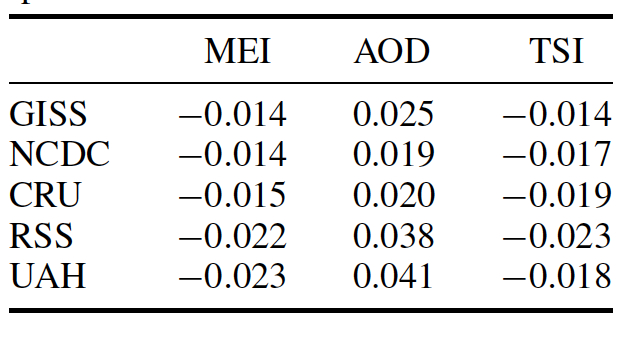

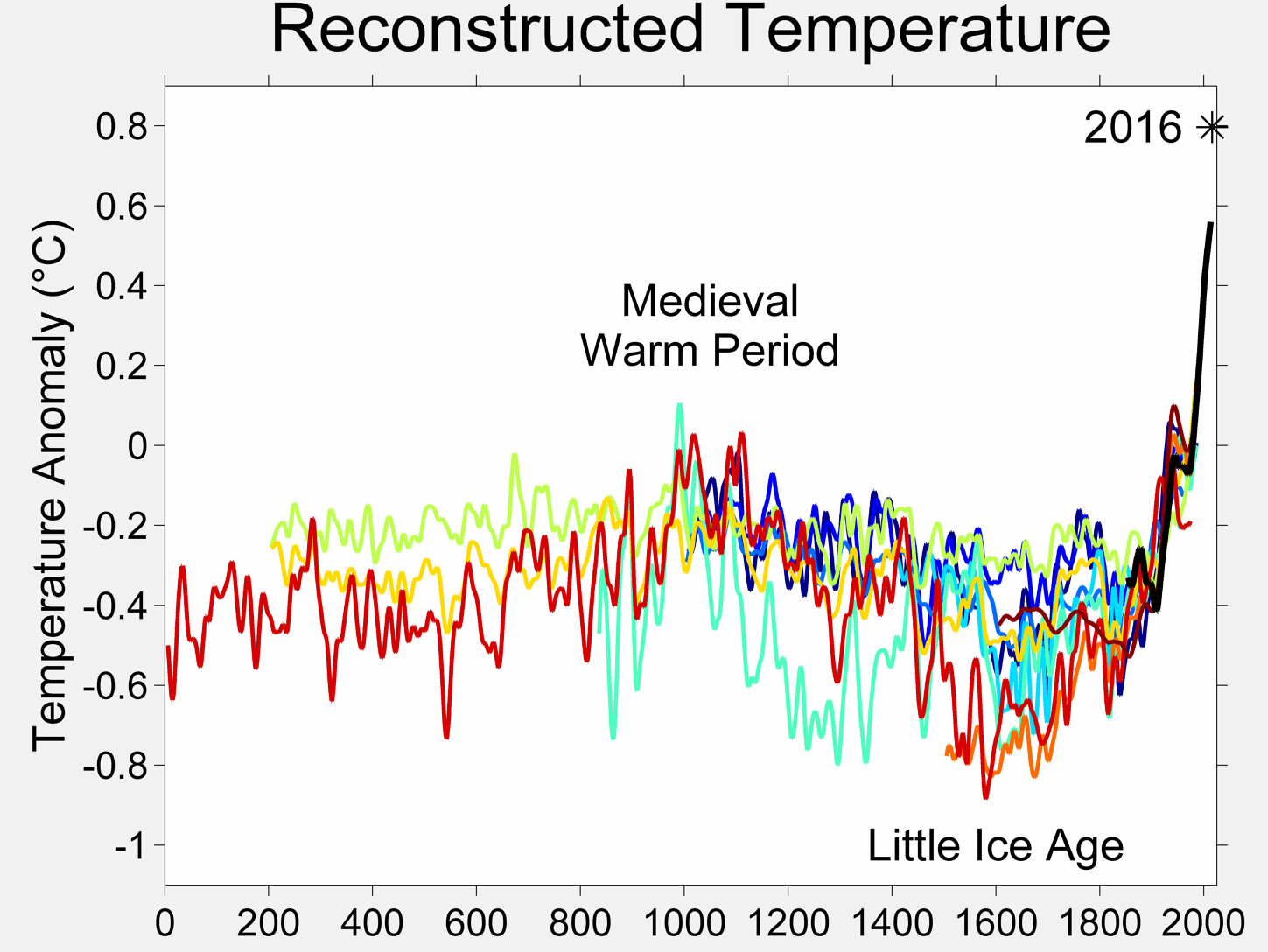
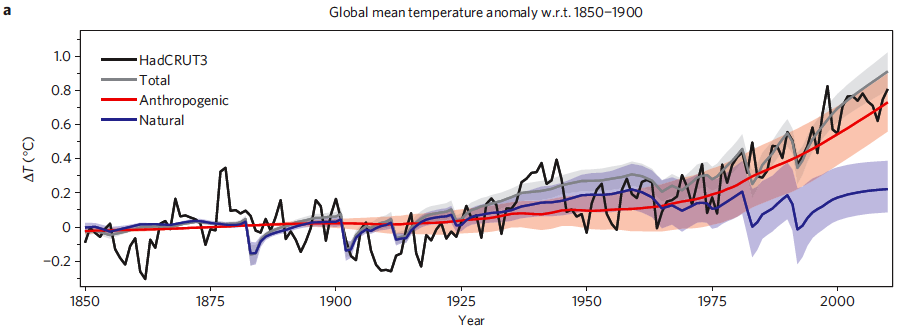

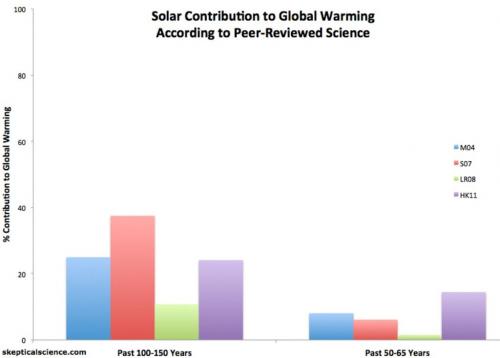








are proven by peer-reviewed studies to be correct and that: -
Recent oppositely directed trends in solar climate forcings and the global mean surface air temperature BY MIKE LOCKWOOD AND CLAUS FROHLICH
is shown by peer-reviewed studies to be wrong in some way, that still does not invalidate the fact that Solar output [once the 11-year cycle has been removed], has had no tend or virtually no trend. http://www.pmodwrc.ch/tsi/composite/pics/org_comp2_d41_61_0705.png
Claims that the recent anomalous warming are solely due to solar effects are unsustainable. It is clear that the current anomalos warming cannot be explained without including the effects of GHGs and CO2 in particular.
On the contrary, the enhanced greenhouse effect from CO2 has been confirmed by multiple lines of empirical evidence (eg - satellite measurements of infrared spectra, surface measurements finding more downward infrared radiation warming the planet’s surface).
"If I was to blame any atmospheric gas of a GH effect, I would blame the Water Vapor, not the the coolant CO2."
You would be right in that water vapour is the most dominant greenhouse gas. It's also the dominant positive feedback in our climate system and amplifies any warming caused by changes in atmospheric CO2. This positive feedback is why climate is so sensitive to CO2 warming.

What it shows is a close correlation between Solar Irradiance (the orange line) and global temperature (dotted blue line). But they also show the correlation ends when the modern global warming trend begins in the mid-70's. The data is all there and it's unambiguous - there's a reason why so many studies (listed above under "Other Studies on solar influence on climate") conclude the sun's influence on recent global warming is minimal.However, this is not what is observed over the 20th century. Solar activity levels out in the 1950's. However, the modern global warming trend began in the mid 1970s. If the sun was the cause of global warming, the planet would've been at its highest energy imbalance in the 1950s. Then the planet would gradually have approached equilibrium over the next few decades.
The opposite has occured. The energy imbalance has in fact increased over the past 3 decades and is still increasing. Of course, we now know why the planet is in radiative imbalance - due to an enhanced greenhouse effect caused by increasing greenhouse gases such as CO2 and methane.